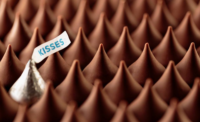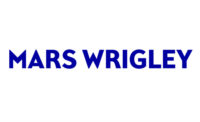
When it comes to Easter candy sales, mass, drug and grocery stores weren’t the only ones trying to make a sale before the Easter bunny made all of his stops.
A new report from Market Track shows that cross-channel pressure continues to increase, as mass, drug and grocery retailers — long thought of as the traditional destinations for Easter items such as candy — faced competitive threats from unlikely stores this year.
Macy’s and Toys ‘R Us both got in the Easter candy game this year, and bundled toys with candy in their circular ads.
That doesn’t mean the major players in the Easter candy sector were slacking though. Kmart and Walmart featured full pages allocated to candy as well as full pages allocated to toys.
Kohl’s and Walmart were the only two retailers in the department and mass channels to increase both their circular ad page volume year over year in the two weeks leading up to Easter.
Walmart more than doubled the number of circulars published in the two weeks prior to Easter 2014 compared to 2013, pulsing circulars featuring specific departments separately.
Scanning CVS’ Easter circular for trip drivers, they allocated roughly 75% of their 4/14 front cover to candy and soda—both top trip drivers—yet the remaining 25% was allocated to health & beauty products and beer, neither of which were identified as top trip drivers.
As for grocers,despite page count volume slightly increasing during the two weeks prior to Easter 2014 compared to 2013, several grocers reduced the number of Easter-themed circulars year over year, including Bi Lo and Food Lion.
However, many grocers did increase their focus on candy promotions on the front and back page.
That’s smart considering that candy was ranked among the top 5 items that inspired consumers to go to the store in the first place. The other top trip-driving categories included: Soda, Cake, Candy, Beef, and Pork, according to Market Tends most recent Grocery Shopper Insight Survey.
Easter advertising gets social
Of course, as Easter candy destinations continue to evolve, so do the methods of advertising.
Both drug and mass retailers used varied promotional strategies to capture the attention of Easter shoppers in social media.
CVS and Walgreen’s promoted sweepstakes offers on their Facebook pages with a variety of Easter giveaways, including an Easter basket with toys and treats, and various gift card prizes.
Target and Meijer, on the other hand, leveraged Facebook and Twitter to promote loyalty offers on purchases during Easter week, such as mPerks coupons at Meijer, and an exclusive Target Cartwheel offer for additional savings.
Meanwhile, arguably the most well-known online retailer also got in on the Easter candy action this year.
Amazon promoted over 100 candy products on the category pages of their website in the two weeks leading up to Easter 2014.
However, they weren’t products aimed at moms and dads playing Easter bunny for their two kids. The majority of the candy promotions offered cases of pallets of the product at price points from $75 to $150.
Of the candy promotions featured, 49 percent were either Lindt or Ghirardelli brands.

In other brand news, Hershey led all candy manufacturers in print promotional volume, as well as share of total candy promotions.
Despite that though, the company decreased the quality of their ads from Easter 2013 to Easter 2014. That’s primarily because many of the Hershey ads moved off of the print cover pages (front & back) and wraps. Specifically, In 2013, 35 percent of Hershey print ads were positioned on the front or back cover, whereas in 2014, only 26 percent received premium page positioning.
Overall though, Hershey still led in the quality of ads among the candy companies. They were followed by Mars, Mondelez International, Lindt/Ghiradelli, Russell Stover/Pangburn, Nestle, Just Born, Ferrara Candy Co., RM Palmer and finally, Ferrero.
And, while the quality of Hershey’s ads were down from last year, Mars’ were up.






